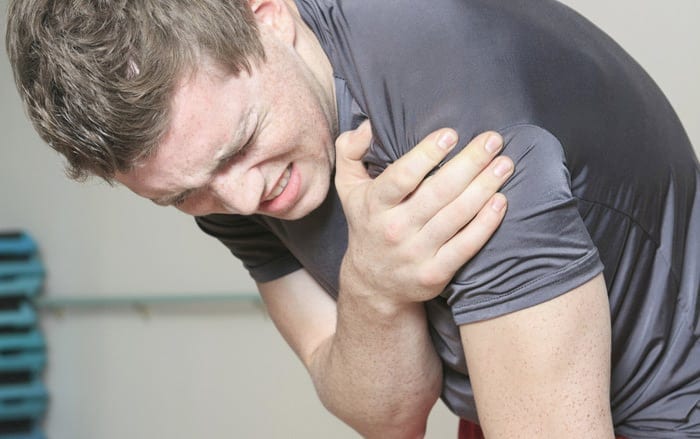The clavicle is a long bone located between the breastbone and the shoulders. Most injuries to this bone are related to trauma from a car accident, falls, or sports injuries. Depending on their severity, they may heal on their own or need surgery. In addition, rehabilitation treatment may be required later.
While rehabilitation should be ordered by the specialist and supervised by a physical therapist. Some simple movements can be performed to improve this condition and speed recovery. We share some rehabilitation exercises for a broken clavicle that will surely help you feel better.
Overhead stretch
After suffering a broken clavicle, the immobilization or surgery involves a rest. It can cause shoulder stiffness. So, the best way to improve pain caused by lack of movement in that area of the body is with some stretches for the shoulders and clavicle:
- With the arms stretched out along the body, face-up, turn the hand corresponding to the arm with the broken clavicle with the palm facing up.
- Move your arm slowly until your shoulder is as close to your head as possible.
- To better visualize it, imagine that your arm is like a clock hand that moves laterally from 6 o’clock (starting position) to noon (end position).
- The arm may not be fully stretched for the first few days, but that is normal.
- When you reach the final position, wait about 10 seconds and bring your arm back to the starting position. Then repeat the movement but with the palm of your hand facing down.
- This exercise can be done daily for about 5 minutes, although the time may progress as mobility and flexibility are restored.
Assisted lifting
Another exercise to rehabilitate a broken clavicle and improve shoulder mobility is to grasp a stick. Grasp one end with the first of the rehab arm, and with the other hand grasp the other side of the club, about a third before the end. That hand will push the stick as if helping the other arm to rise, but slowly and as far as the range of motion allows. It is an “assisted” version of the previous exercise.
Ball stretch
If you have a stability ball, also known as a therapy ball, you can take advantage of it by doing a reaching exercise. First, kneel on the ground with the ball in front of you and with your hands on it. Lower your buttocks to your heels while very little by little you stretch your arms. Move the ball away from your body but without removing your arms from it. Then slowly return your arms over the ball towards your body and return to the starting position. Repeat three to five times.
Exercise with tape
To improve the internal rotation of the arm, the tape can be used as a rehabilitation tool. You just have to take the tape with the hand of the compromised arm. Pass it towards the back of the body and catch it with the other hand. The tape is then moved back and forth with the help of both hands. You can start with 5 minutes of exercise and then increase the time as the shoulder recovers.
Shoulder lift movements
Another exercise to improve shoulder rotation and movement after a clavicle tear is with raises. Standing and facing a wall, to climb the toes up the wall as far as we go. The final position is the one in which you begin to feel discomfort or pain. At that height on the wall, you can make a mark to assess progress each week. Then, see how much the compromised shoulder has been raised. Then, it is returned to the starting position by climbing with the fingers downwards until they reach shoulder level.
Shoulder toning exercise
Standing and facing the wall, we support the engaged arm at the height of 90 degrees. Then it is about leaning the body as far as possible towards the supported hand for a few seconds, and it returns to the starting position. Once the clavicle rehabilitation has advanced, this movement can be done by flexing the elbow. We return to the starting position by stretching it. We also remember that these exercises are always best supervised by a physical therapist.
Advice
The rehabilitation process for a broken clavicle varies on the degree of the fracture and the muscles involved in the injury. A rehabilitation physician is ideally suited to create an exercise plan that aims to regain mobility in the fracture areas and assess the progress achieved.
No exercise should cause severe pain or discomfort. If so, it must be discontinued immediately. The duration of rehabilitation depends on the plan devised by the specialist and the perseverance and commitment of the patient. Although exercises can be uncomfortable at first, doing them correctly is the only thing that guarantees recovery.

